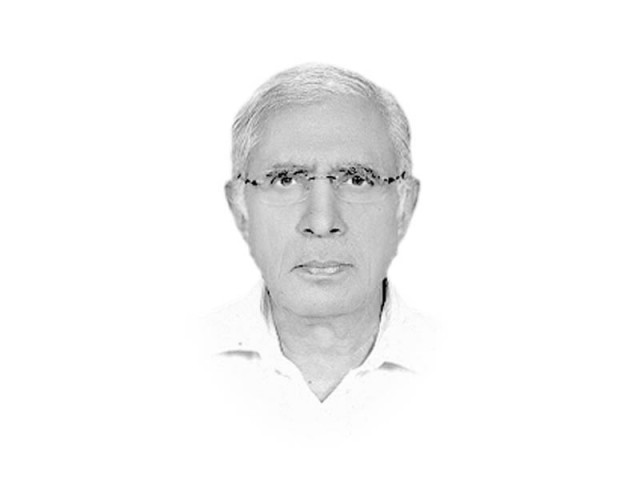EFF: time for a reality check
In desperate need of a reality check

The writer served as Executive Editor of The Express Tribune from 2009 to 2014
What is intriguing about the final review assessment is that the Fund continues to ignore the questions raised by some of Pakistan’s world-renowned economists with regard to the big gap between the officially claimed growth rate for the outgoing year and the one calculated by these economists. Also, the Fund does not appear to be too bothered about the reality of the gross international reserves as almost all of the $18 billion in the reserve are borrowed resources and that too at very high interest rates. One would have thought the Fund would warn the government against accumulating reserves through borrowing because of the palpable vulnerability such reserves would carry while one cannot rule out the possibility of facing default in view of declining exports. Inflation has remained low at 5.2 per cent not because of any sustainable policies of the government but mostly because the imported component of inflation has remained very low in response to declining world oil prices.
The programme performance in the fourth quarter of FY2015-16 has been solid, says the Fund review as in its view most end-June 2016 quantitative performance criteria (PC) were met, “although the ceilings on the budget deficit and net domestic assets (NDA) of the State Bank of Pakistan (SBP) were exceeded by small margins” and; all indicative targets and structural benchmarks (SB) were met, except for the delayed notification of multi-year tariffs for three power distribution companies. One recalls that independent Pakistani economists of international repute have questioned the official budgetary deficit figures as well and explained in detail how these were concocted.
The review further said that Pakistan’s economy has made significant progress towards strengthening macroeconomic and financial stability and resilience, and laying foundations for higher, more sustainable, and inclusive growth. The use of the term ‘inclusive growth’ here seems rather out of context because over the last three years while the official growth rate seemed to be going up, the rich in this country have become richer as the poor went further down on the poverty pole making inequality more blatant.
The review finds regulations to fight money laundering and financing of terrorism to have been strengthened. But so far these regulations have miserably failed to effectively arrest terror financing and money laundering.
The final advice of the Fund following the conclusion of the review makes abundantly clear what actually ails Pakistan’s economy: “To consolidate and reinforce the gains achieved in the last three years, the economic reform agenda needs to continue after the programme ends. In this context, it will be important to further strengthen public finances and external buffers, broaden the tax net, improve public financial management, strengthen the monetary policy framework, address losses in PSEs, complete the energy sector reforms, and accelerate competitiveness-enhancing improvements of the business climate, including the trade regime. Continued progress with these reforms will be critical to reinforce the authorities’ achievements under this IMF-supported program.”
While extending the EFF support to Pakistan on September 4, 2013, the Fund had advised that to ensure medium-term fiscal sustainability and create fiscal space for social and investment spending, it is important to raise the tax-to-GDP ratio, including by broadening the tax base through a reduction in exemptions and concessions, and extending taxation to areas currently not fully covered by the tax net. However, according to the Economic Survey 2015-16, despite a significant increase in revenue collection, the tax-to-GDP ratio varied between a pathetic band of 9.1 and 11.0 per cent.
Published in The Express Tribune, August 6th, 2016.
Like Opinion & Editorial on Facebook, follow @ETOpEd on Twitter to receive all updates on all our daily pieces.














COMMENTS
Comments are moderated and generally will be posted if they are on-topic and not abusive.
For more information, please see our Comments FAQ